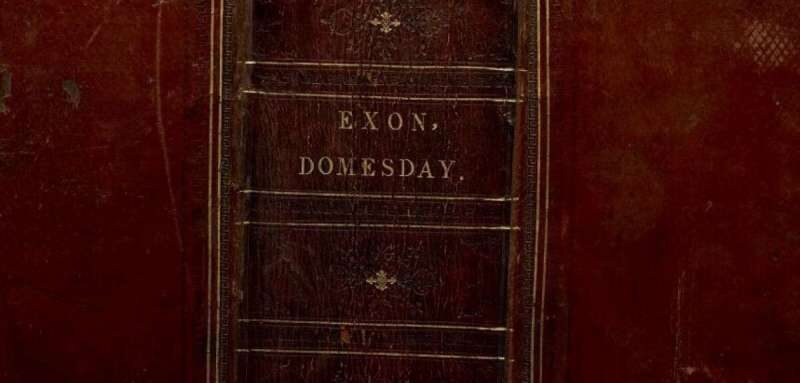Research published in the English Historical Review shows historians now believe Domesday was more efficient, complex, and sophisticated than previously thought. The survey's first draft, which covered England south of the River Tees, was made with astonishing speed — within 100 days.
It was then checked and reorganised in three further stages, resulting in the production of new documents, each carefully designed for specific fiscal and political purposes. The iconic Domesday Book was simply one of several outputs from the process.
Lead researcher, Dr. Stephen Baxter, Associate Professor of Medieval History at the University of Oxford, said: "Domesday Book is at once one of medieval England's best known and most enigmatic documents. The reasons for — and processes behind — its creation have been the subject of debate among historians for centuries. This new research, based on the earliest surviving Domesday manuscript, shows the survey was compiled remarkably quickly and then used like a modern database, where data is entered in one format and can be extracted in other formats for specific purposes."
This interpretation emerged from a major collaborative study of Exeter Cathedral Library MS 3500, aka Exon Domesday. Although incomplete, covering only Wiltshire, Dorset, Somerset, Devon and Cornwall, it remains priceless because it is the earliest surviving manuscript and contains distinct texts written by several scribes, working under intense pressure in the summer of 1086. The text has been in print since 1816, but a team of specialists led by scholars based at the University of Oxford and King's College London have now established what each scribe wrote, what sources they drew on, and how they collaborated. It affords a deeper understanding of how and why Domesday was made.
Oxford Prof. Stephen Baxter said: "This research shows the compilation of Domesday to be one of the most remarkable feats of government in the recorded history of Britain. The survey was brilliantly conceived to generate and structure information that would enable the Conqueror's regime to maximise his revenue from different income streams."
"The Conqueror's regime effectively compiled and manipulated a database of England's landed wealth in less than nine months — using technologies no more complex than parchment, pen and ink, and human interaction." says Professor Baxter.
Historians have known for some time the Normans inherited an unusually powerful state in 1066. Even so, this new evidence demonstrates how effectively they mastered its machinery and adapted it to the particular challenges of governing conquered England.
It also confirms they did so drawing on ideas, technologies, and personnel originating from the Continent, for the closest parallels are the great surveys compiled by the Emperor Charlemagne and his successors in the eighth and ninth centuries, and confirmation charters issued across northern France in the late eleventh.
In addition, the study of Exon's scribes has established they were trained in either Normandy or elsewhere in north-west Europe. As Baxter puts it, "The Domesday survey was, therefore, a distinctively English yet fundamentally European phenomenon."
These findings may resonate widely at a time when the pandemic and Brexit has placed intense demands on the machinery of the state and public participation in its strategies.
More information: This new interpretation of Domesday is advanced by Stephen Baxter, 'How and Why was Domesday Made?', English Historical Review, Volume 135, Issue 576 (published online 22 December, 2020 and freely accessible). Provided by University of Oxford




Thus, it appears to this uninformed soul that the same forces of hierarchical authoritarianism that there won (and, as above, solidified their gains quite rapidly) are those behind one world government today.
I'm I'm wrong with this admitted generalization, please advise. Thanks.
R.C.